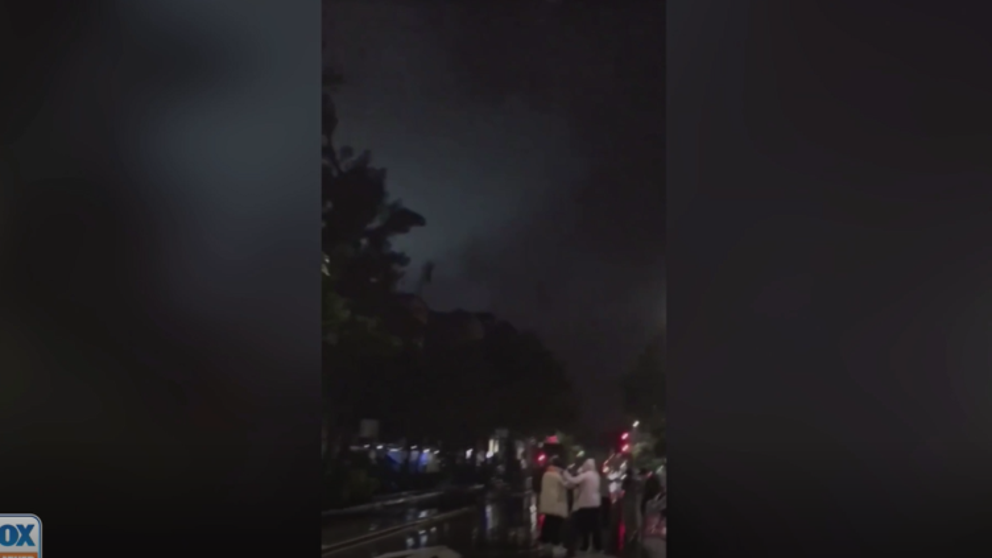The skies lit up as earthquakes shook Mexico City and Acapulco
The reasons behind the glowing skies during Mexico’s earthquakes last night may surprise you.
On Tuesday night, a series of earthquakes struck the southern coast of Mexico, with the largest being a magnitude 7.0 earthquake that hit Acapulco.
The ground also shook over 200 miles north in Mexico City, where the earthquake knocked out power for 1.6 million residents. But there, a mysterious phenomenon flashed up above with pale blue lights igniting the skies.
Videos of flashing lights above both Mexico City and Acapulco were posted online, leaving many wondering what they were.
Getting lit
Luminous or electrical phenomena associated with earthquakes are called "earthquake lights".
"To set the record straight, I think that when scientists refer to earthquake lights, that's a reference to a natural phenomenon," said Austin Elliott, a research geologist at the USGS Earthquake Science Center in Moffett Field, California.
"They are fairly controversial in the sense that they haven't been reliably captured or necessarily even documented."
According to Elliott, earthquake lights (or EQLs) as natural phenomena have been reported for centuries, but have not been verified.
"That's why I think it's important to have extra caution when interpreting what we saw in Mexico City this week," said Elliott.
Naturally occurring earthquake lights remain elusive and controversial, with different theories being presented in an attempt to provide an explanation.
Some of those explanations say the cause of earthquake lights may lie beneath our feet. But according to Elliott, the answer might simply lie on the surface – out in the open and right in front of us.
From the ground-up
Some researchers have suggested hypotheses rooted in mineral physics to try to explain the causes of earthquake lights.
A paper titled Prevalence of Earthquake Lights Associated with Rift Environments from 2014 suggests that earthquake lights may be caused by electrical charges created by the grinding of certain rocks.
Rocks undergo a tremendous amount of stress during an earthquake, and research suggests that it is this stress – coming from rocks stretching and crushing against each other – that generates electricity.
According to Friedemann Freund of NASA’s Ames Research Center, who was a researcher on the paper, earthquake lights can rise up to 656 feet (200 m) in the air — higher than two Statues of Liberty stacked on top of each other.
Similarly, another theory suggests that earthquake lights are caused by chemical bonds in the rocks being broken while the rocks are under stress.
Called "triboluminescence", this phenomenon in earthquakes largely involves quartz, which is commonly found in the Earth’s crust. When quartz crystals become squeezed, the bonds within them break, thereby generating electricity and light.
The right voltage
According to Elliott, the lights that shined during Mexico City's earthquakes this week were not the result of rocks undergoing stress. Rather, they were produced by power grid disruptions and explosions that were caused by the earthquake.
"Arcs happen, transformers explode. That's a common phenomenon when power lines hit each other, whether that's in strong wind, whether that's because they're being swung around by ground motions," said Elliott.
This luminous activity then appeared to be magnified due to the cloudy and rainy weather conditions that night.
"It really looked like the sky was just lighting up everywhere," said Elliot. "But that's because all these power flashes going on all over the city were bouncing off these low clouds."
The disruption of power grids during earthquakes is nothing new, and neither are the flashing lights that accompany the disruptions. But as far as naturally occurring earthquake lights go, the jury is still out.
"The controversy around it stems from how difficult it is to document, and most people will remain skeptical until it's very widely seen," said Elliott.
"That's why it's important to clarify that what we're seeing in Mexico City has a much more mundane explanation. And if there were evidence of earthquake lights in those videos, it would require much more rigorous study and investigation."
